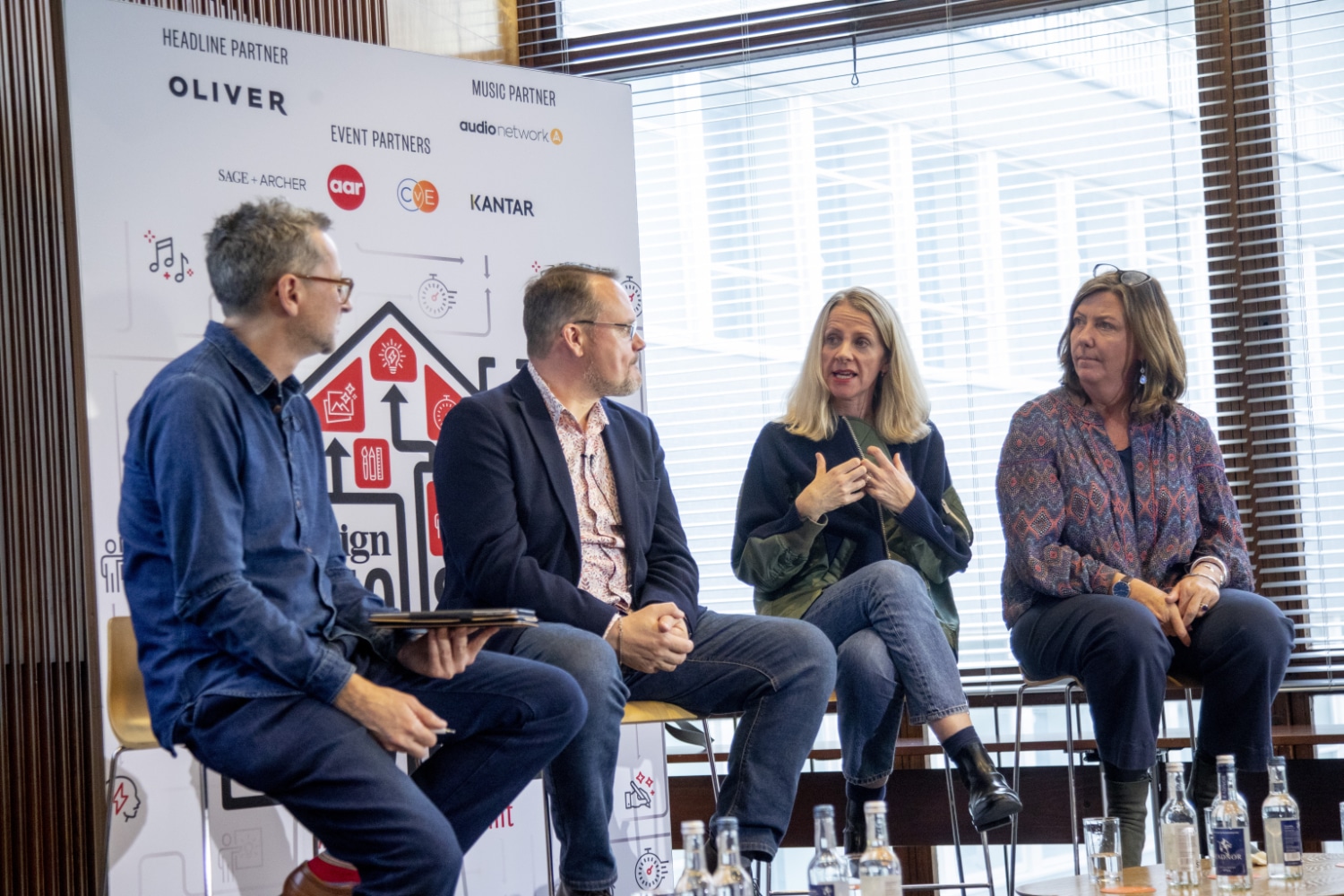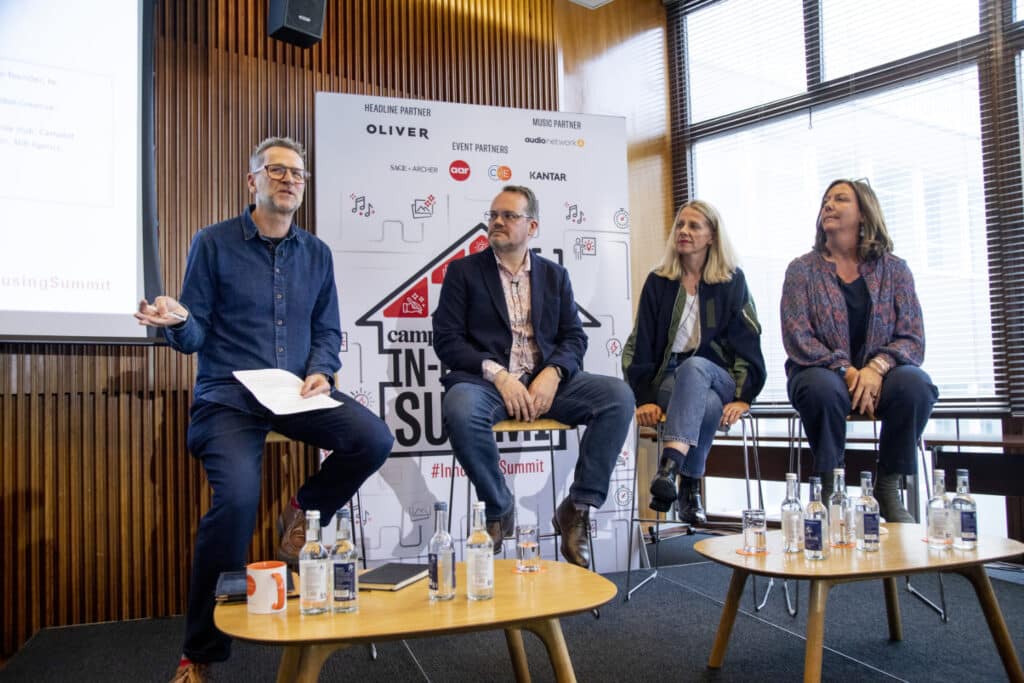Writing An In-House Agency Manifesto

At Campaign’s recent in-housing summit, we set out to draw up the principles needed for IHA success
If you had to write a manifesto for the ideal in-house agency, what would it include? At Campaign’s In-Housing Summit, we tried to write one, live on stage.
Thankfully, I wasn’t doing it on my own. Natalie Brewster, Director of Global Creative Operations at The Body Shop, Arabella Gilchrist, Head of Creative Hub at Camelot and Deloitte Ireland’s Chief Sales & Marketing Officer Nick Burbidge joined me to draw up a list of principles that are key to the success of any IHA.
We had a live Google Doc open on the screen behind us, filling it out as we went along, debating the key points and taking suggestions from the audience of over 100.

From left to right: IHALC’s Patrick Burgoyne, Nick Burbidge of Deloitte, Natalie Brewster from The Body Shop and Arabella Gilchrist from Camelot at Campaign’s In-Housing Summit
By the end of the session, we had ten points for our Manifesto, plus one bonus thought:
1, A North Star – find yours and follow it. And keep reminding people about it. It’s so important for everyone in an IHA to create a unifying purpose and objective that, used well, gets everybody aligned and collaborating toward it.
2, Nail your remit. There are lots of different forms an IHA can take, from studio to fully-fledged creative agency (as we discussed here). Being clear about what your IHA is there to do, defining what your outputs should be, understanding whether your role is to be a service or a strategic partner – all of those are vital discussions to have. You’ll probably also want to think about the business’s existing marketing ecosystem, what its external partners provide and whether any of that should come in-house. And then there’s the question of what defines success? What KPIs are relevant for this IHA?
3, Find your allies and build trust. As so many of the leaders we have interviewed for our IHALC sessions have stressed, it’s vital to build relationships and alliances when you are in-house. Identify the people in the organisation who are potential allies, and those who you are going to need to win over.
4, Understand what it means to bring in creative. In order to deliver on the agreed remit of the IHA, what new skills do you need to bring in? Is the organisation ready for them? At our Autumn One-Day Summit, Congregation Partners’ Matt Wells talked about ‘preparing the host for the creative transplant’ and the problems that can occur when an organisation isn’t ready to bring in creative people. And then as well as the ‘who’, you also have to think about the ‘how’ you bring people in – do you have the right recruitment processes? Is HR going to get in the way of what you need to do?
5, Prove your value. The IHA should be valued as an engine of growth. Take every opportunity to show the business what impact the work the IHA has. If cost saving is important (when is it not?!) get the data that will demonstrate how much more cheaply the IHA can produce campaigns than external partners. Show how a great IHA can improve efficiency and create work that is more effective thanks to your proximity to the business and its challenges, opening the way for the IHA to take on work that is currently being done by external partners. Constantly listen to what’s going on across the business and gain trust.
6, Get upstream. If you can gain that trust, you can start to direct the conversation as well as being a part of it. Leading IHAs such as the LEGO Agency are able to be proactive within their organisation, suggesting solutions to problems rather than always waiting to be handed a brief. As one consumer products Chief Design Officer told McKinsey in a recent report: ‘You can’t wait for marketing to bring you a design brief and then complain about how poor it is… [you] need to go out there, engage with the business, and play a role in creating the brief.’
7, Be politely rebellious. As Waitrose Creative Lead James Turner reminded us at the start of the Campaign conference, creatives have permission to bring the questioning culture of an agency into the business: to ask why, to be disruptive, in the right way. To be good, you have to be pushy at times. Aim to break the rules where it’s useful to do so! (It helps if you have a very supportive boss in the C-Suite.)
8, Build your culture. While many IHAs choose to project their culture via a distinct name, brand and physical space, how it behaves is arguably more important. Any in-house manifesto has to consider the right mindset needed for success. Yes, you need to be commercially-aware, but you also need to maintain a creative culture and permission to be able to challenge the business and provide some spark (see point 7). What are the right values and behaviours to develop in your team? How do you find that balance between commercial awareness and creative risk-taking? One thing that certainly helps is to refer to yourselves as a ‘Partner’ as opposed to being seen as a service provider.
9, Great process = Great work. All this has to be underpinned by great processes that help but don’t hinder the work. So what is the right amount of process? How do you install discipline and rigour? What does that look like? Do you need to add Strategy? Account Management? Again, they won’t be right for everyone but Account Management has certainly helped many IHAs to instil discipline, manage stakeholders and smooth out relationships and process headaches.
10, Become the agency of choice. While some IHAs are mandated as the default for work, that can lead to resentment. Better to build enough trust and credibility to become the first port of call by choice, as BBC Creative has done.
10+1, Have fun!
My thanks to Natalie, Arabella and Nick. We plan to develop this Manifesto over the coming weeks. If you have suggestions, criticisms, or points to add, please email me at patrickb@wdc-london.com
